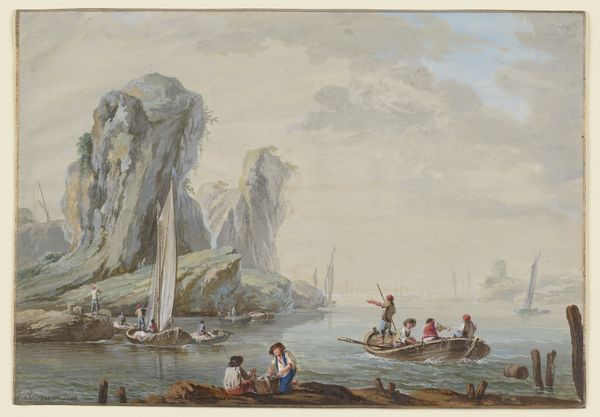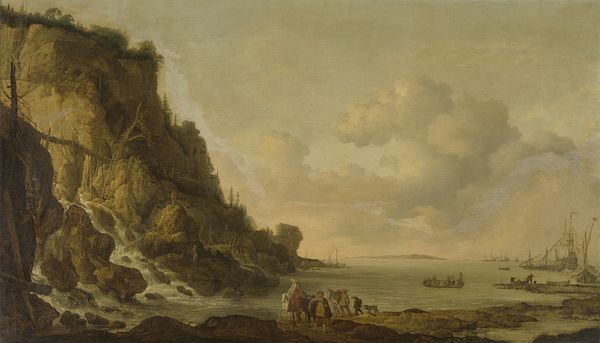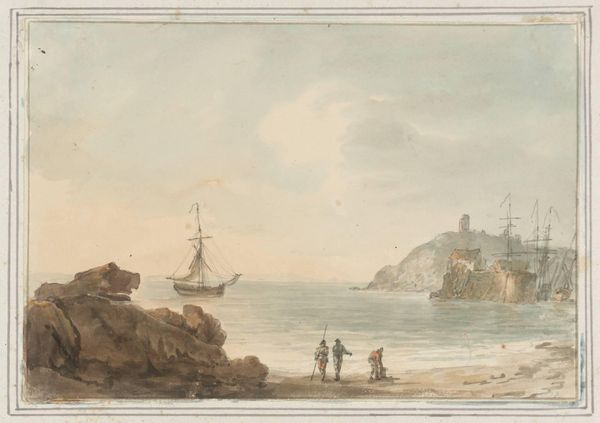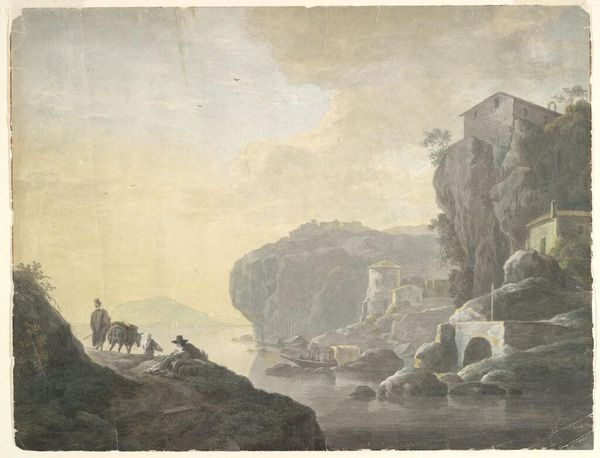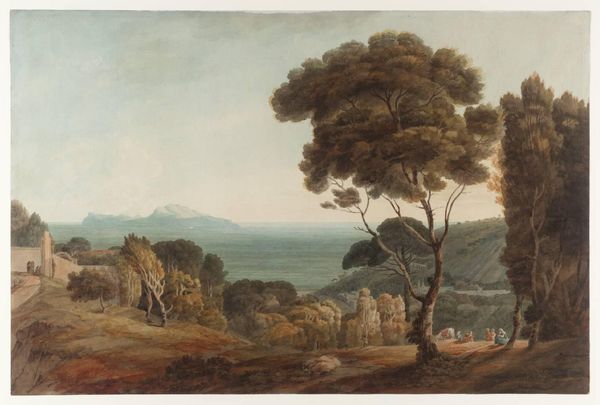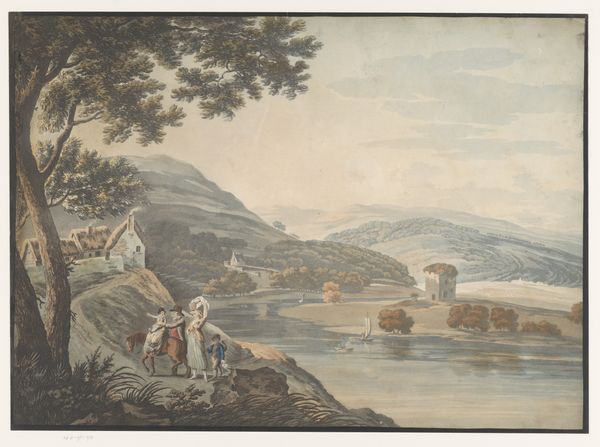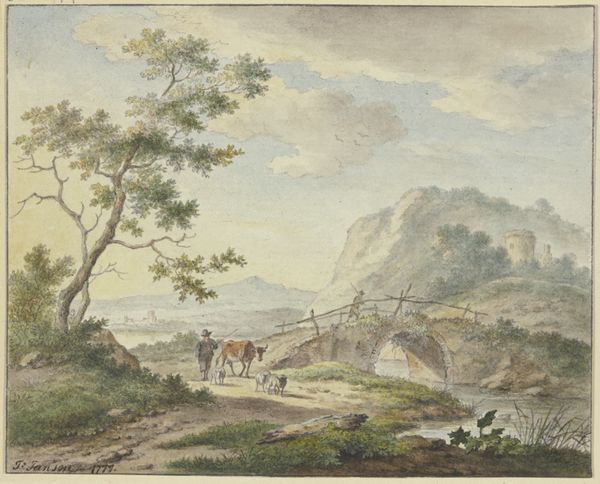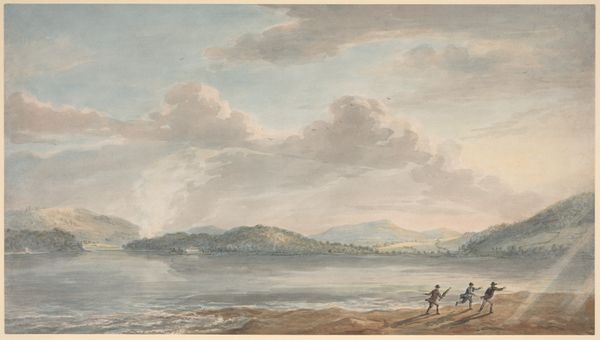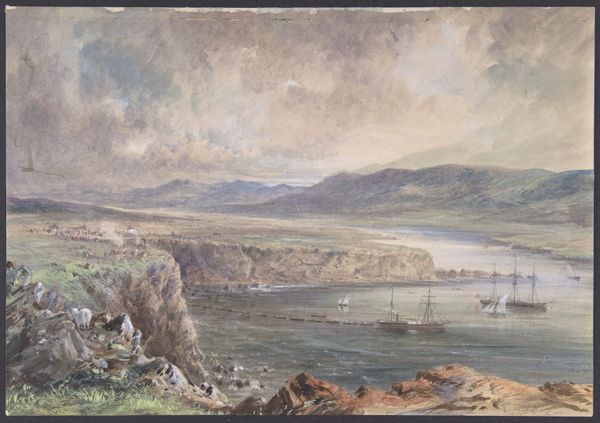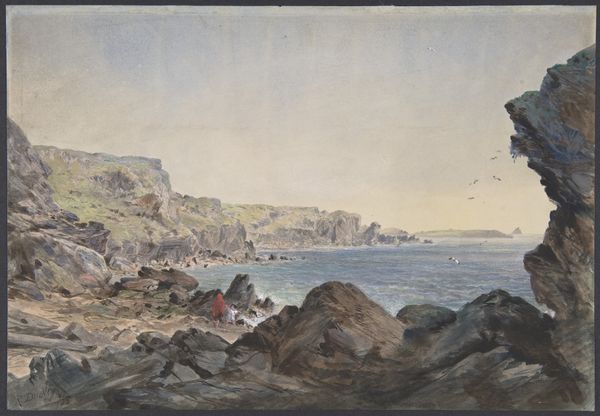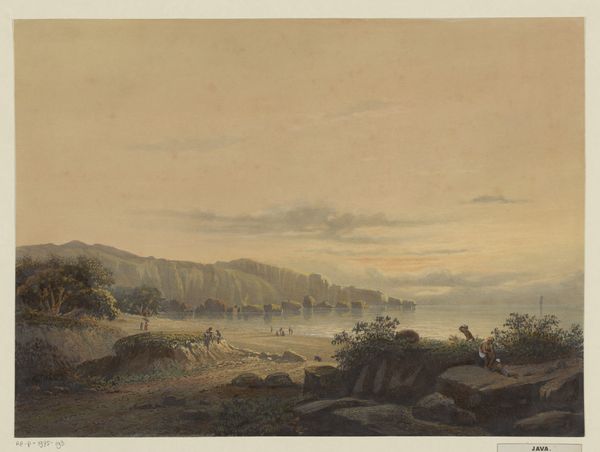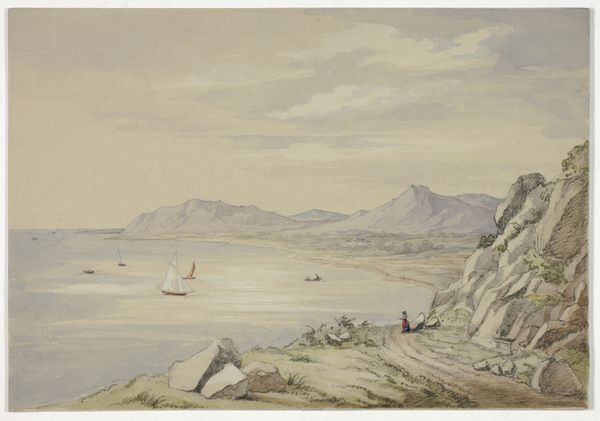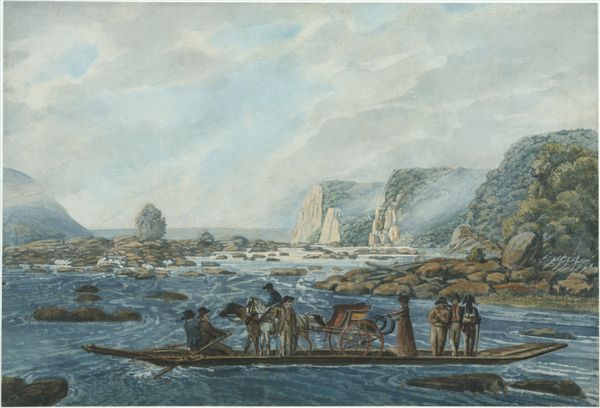
drawing, watercolor
#
drawing
#
french
#
landscape
#
figuration
#
watercolor
#
15_18th-century
#
watercolour illustration
#
rococo
Copyright: Public Domain
Curator: Let's consider this captivating watercolor by Jean Pillement, "Meeresbucht mit großen Felsen rechts und Fischern," created around 1769. Editor: It’s immediately striking, a gentle blend of blues and ochres. The overall feeling is one of tranquility mixed with a slight melancholy, perhaps owing to the subdued palette. Curator: Absolutely. Pillement, as a Frenchman deeply influenced by the Rococo style, brings to this scene a focus on the picturesque. We must examine his position within colonial trade routes and the way these "idyllic" landscapes often mask social and political undercurrents. Consider, too, how these images served as commodities, feeding into the orientalist fantasies prevalent among the European elite. Editor: That’s interesting. I am struck by the actual labor depicted here—the fishermen, their nets—the whole material business of wresting a living from the sea. It reminds me how art often obscures the physicality of the world, turning even work into a romantic vision. What type of nets they have, how are they produced? I am interested in their means. Curator: These details do resonate with larger socio-economic forces. Pillement isn’s just presenting a scenic view; he's showing us figures actively engaged in their livelihoods within a specific economic and cultural frame, perpetuating, as many of these landscapes did, a gaze and perspective rooted in colonial power. Who were those figures and did they partake in exploitation? Editor: Right, but also there’s a material connection to nature being presented—rock, water, nets—and their connection. Those are tactile, immediate realities. Perhaps those figures find the process empowering, and the material engagement liberating in the sense it’s tangible. Their labor has meaning. Curator: Indeed, and by analyzing Pillement's approach within the context of the colonial era, and post-colonial theory, we can begin to dissect how artistic representations actively shaped the collective imagination of that era, but also contemporary views. Editor: It does force us to think about what these idyllic views concealed about human effort. Looking at the art as artifact, in other words. Curator: Precisely, it prompts us to unravel not just what is seen, but who benefits from that seeing, the narratives being bolstered, and the power relations inherent within the gaze. Editor: So, by studying his methods and subject we learn a deeper lesson beyond simple aesthetics. Thanks for helping me with it. Curator: Indeed. A lens into production and its socio-political implications helps give it added weight.
Comments
No comments
Be the first to comment and join the conversation on the ultimate creative platform.
